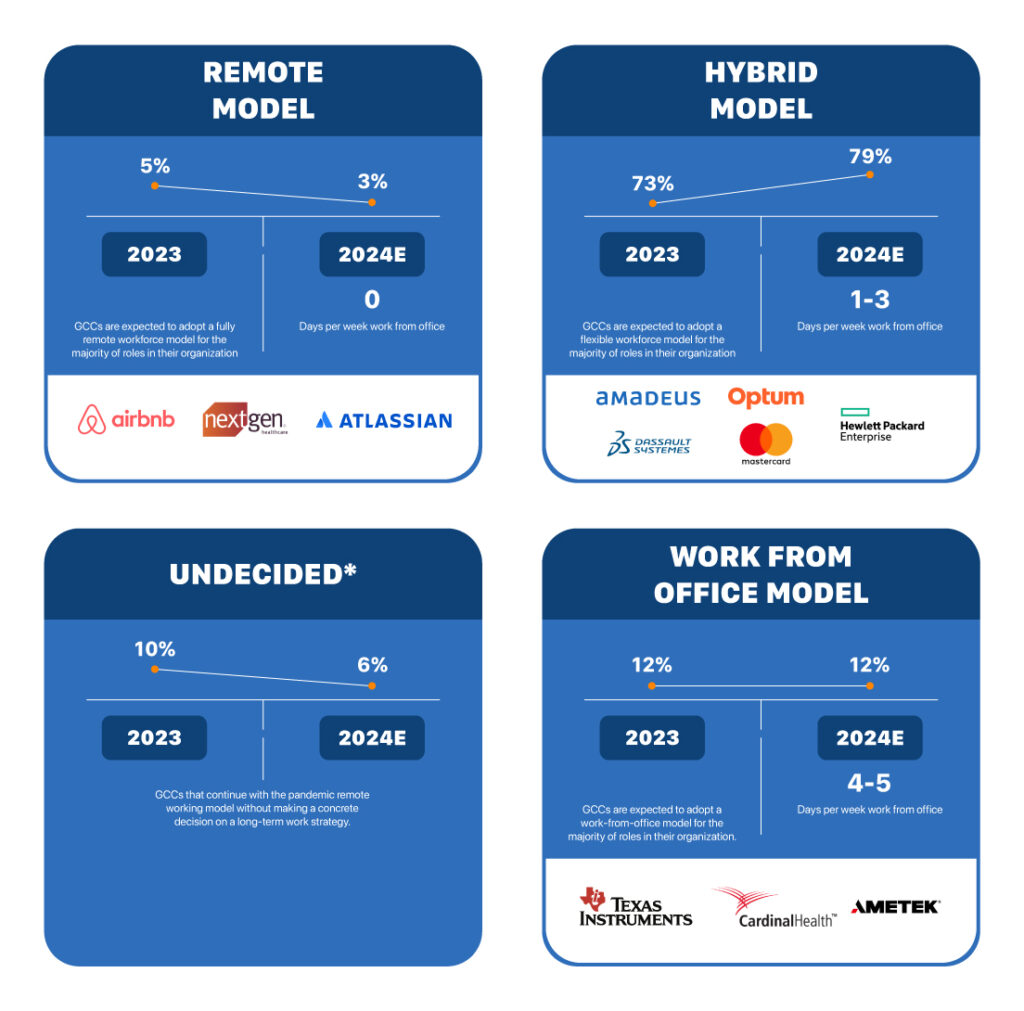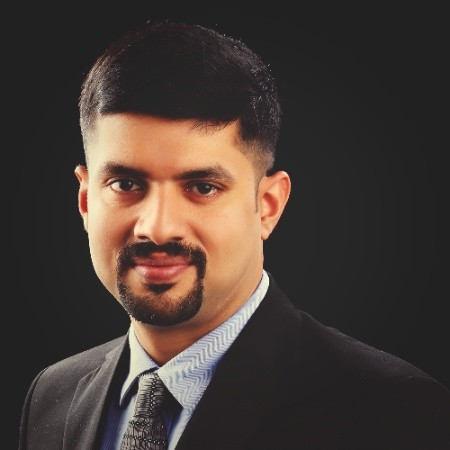|
|
The pandemic reshaped how organizations think about work, leading to an ongoing redefinition of workforce models. HR leaders across industries now face the challenge of determining which model best fits their company’s needs. Should teams return to the office, embrace fully remote work, or strike a balance with a hybrid workforce?
While some businesses push for a full return to office, the trend—especially among Global Capability Centers (GCCs)—is shifting toward hybrid and remote models. These structures offer flexibility and access to global talent but bring unique challenges in productivity, engagement, and maintaining company culture.
This surge in remote and hybrid workforce models is reshaping industries worldwide. By examining trends and strategies, HR leaders can navigate this new landscape, fostering innovation and building resilient, future-ready workforces.
HR leaders today are tasked with not only choosing the right workforce model but also overcoming the unique challenges that come with each one. Whether remote, hybrid, or in-office, each structure offers benefits and requires thoughtful navigation.
The trend toward hybrid/remote work is here to stay, with full return-to-office models being more common in Start-ups or industries that require constant in-person collaboration. It’s essential to explore these work models because they significantly impact productivity, talent retention, and the operational strategies of Global Capability Centers (GCCs), shaping the future of work within these organizations.
Organizations worldwide are constantly experimenting to find the ideal balance between flexibility, productivity, and collaboration. Zinnov’s Employee Benefits Study 2024 offers valuable insights for HR leaders looking to adapt their employee benefits strategies to meet the demands of a hybrid, post-pandemic world. The study underscores the importance of tailored benefits that cater to diverse, multi-generational workforces, with a particular focus on the unique expectations of Gen Z employees. Covering over 86+ India GCCs and 150+ centers across sectors like Software, Engineering, BFSI, Automotive, Telecom, Semiconductor, Gaming, and others, the report showcases how GCCs in India are evolving their models each year to align with these priorities.

These numbers reveal an industry-wide reassessment, with hybrid and remote work taking center stage. Understanding how individual organizations implement these models offers valuable insights into the strategies that can drive success in this evolving landscape. The upcoming case studies will illustrate how HR leaders are constantly driving value for their GCC by implementing remote-first and hybrid models.
A. Flexera India: How Flexera Creates GCC Value through a Remote Workforce Model

Flexera India has embraced a remote-first approach, offering flexibility while motivating employees to focus on in-person collaboration. In our interview with Dolfred Norbert D’Souza, Director of HR at Flexera, he shared how the HR team has successfully shaped a high-performing remote engineering workforce while driving global product innovation.
Note: Remote-first offers both remote and office-based options, while remote-only is fully remote with no in-office opportunities.
Since its incorporation in 2017, Flexera India has steadily increased its focus on ER&D and innovation, driving over 65% of the company’s global product development, and playing a crucial role in shaping their Platform & Data Strategy. The India GCC has been instrumental in developing a unified platform for IT management and leading Hybrid FinOps initiatives, which help clients worldwide optimize cloud spending and enhance financial control.
Flexera’s core values of collaboration and social responsibility have also been central to its employee engagement strategy. Initiatives like AIKYA promote teamwork through volunteer activities with NGOs, while wellness programs, such as self-defence training, enhance physical health, build confidence, and improve personal safety for team members.
Successes
Innovative Programs Driving Engagement:
In addition to maintaining high engineering standards and scaling quickly, Flexera prioritizes collaboration through initiatives that drive engagement and innovation in a remote-first setup.
Challenges
Despite these successes, Flexera faces ongoing challenges in ensuring remote employees feel equally integrated into the company culture. Maintaining a strong sense of connection and inclusion in a virtual environment remains a priority for HR leaders, and it is an area of continuous focus as the remote-first model evolves.
B. Sony India Software Centre (SISC): How SISC creates value for its GCC through a Hybrid Workforce Model

In 2022, Sony India Software Centre (SISC) transitioned to a hybrid workforce model under the guidance of Vinutha Raja, Associate VP and Head of HR. After two years of fully remote work during the pandemic, SISC began a gradual and flexible return to the office. This approach now includes a mandate of two in-office days per week, allowing employees to balance the benefits of remote work with in-person collaboration. Established in 1997, the company initially set up as an offshore center, SISC has since evolved, with India now playing a key role in owning the end-to-end product lifecycle, from conceptualization to delivery in Enterprise Applications, Entertainment and Electronics.
The effectiveness of Sony India Software Centre’s (SISC) hybrid workforce model is rooted in its ability to blend creativity, collaboration, and market responsiveness while maintaining both in-office and remote engagement.
Successes
Challenges
A key aspect of Sony’s hybrid operations is its ongoing shift from traditional time-tracking to a more flexible, outcome-based model. This approach offers employees greater flexibility, but also requires continuous focus on real-time performance monitoring and maintaining high-quality deliverables. Managers are actively working to balance flexibility with the company’s productivity and performance goals.
The future of remote and hybrid workforce models presents HR leaders with both challenges and opportunities. To thrive, leaders must embrace new strategies that promote agility, innovation, and employee well-being. Here are key recommendations for HR leaders navigating this transition:
The shift in hybrid workforce models strategically aligns organizational goals for innovation and performance with the multi-generational workforce’s demands for flexibility, ownership, and equal opportunities. This alignment enables companies to attract and retain top talent, one of their greatest advantages.